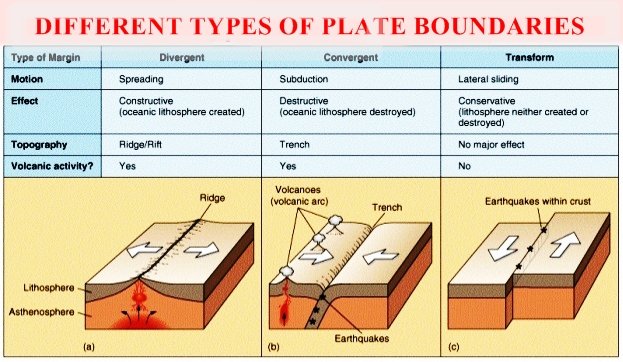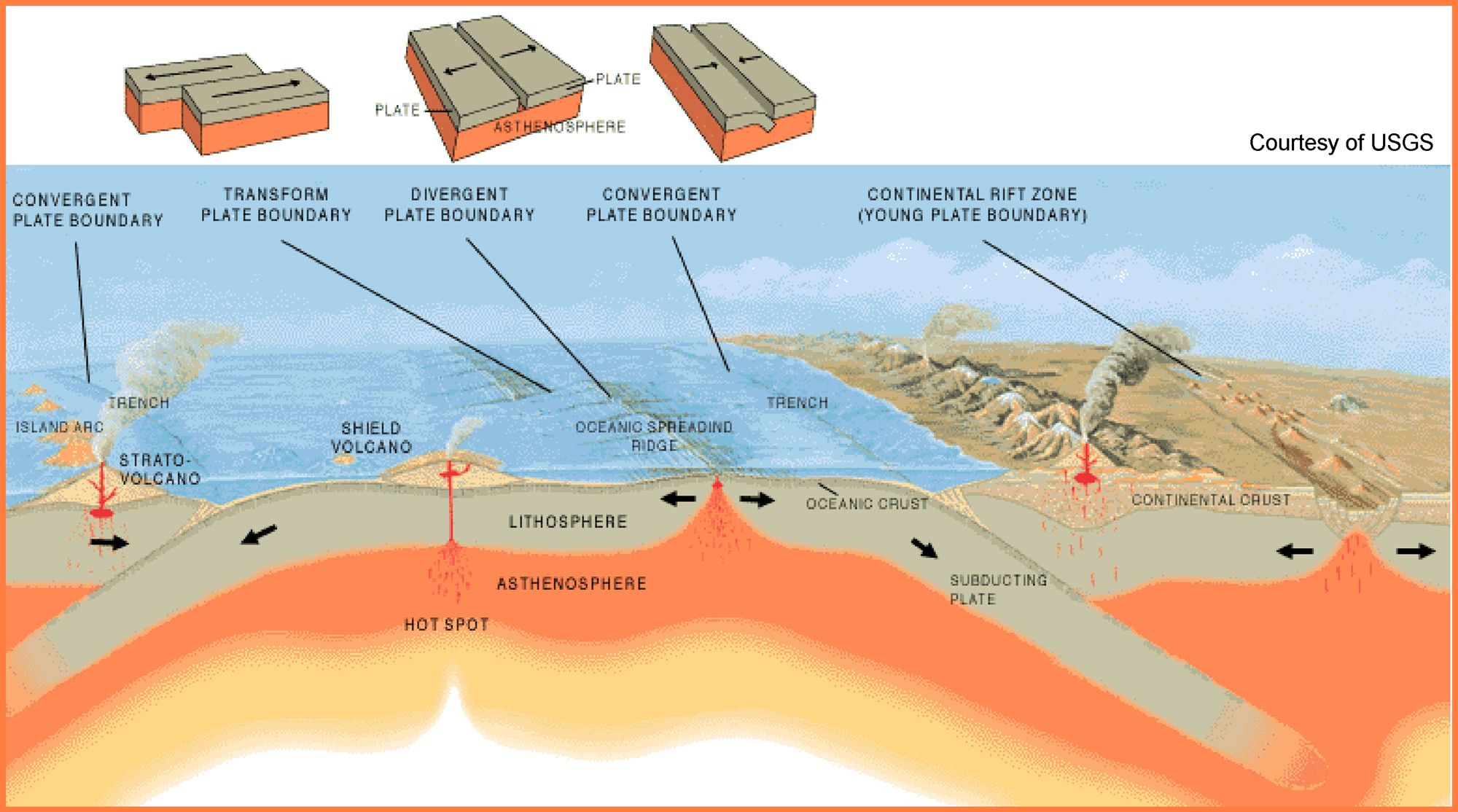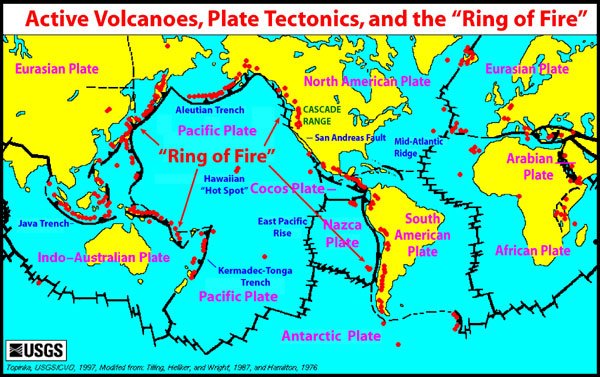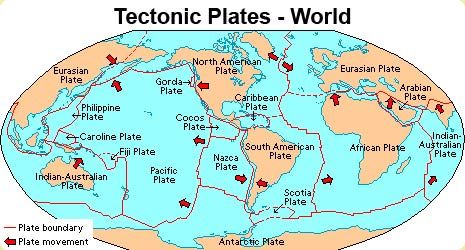PLATE TECTONICS
Plate Tectonics
This is the unifying theory in geology with its origin in the 1960’s
A theory that unifies all geological science data and thought.
Similar to:
• Relativity in Physics
• Chemical bond in Chemistry
• DNA in Biology
• Big Bang in Astronomy
What are plates?
They are segment of the lithosphere, which has little volcanic/seismic activity.
What is Plate Tectonics Theory?
Lithosphere is not solid, but is broken into a number of plates, lithosphere lies on a weak molten asthenosphere.
Solid lithosphere moves on weak, molten asthenosphere.
The top layer of the tectonic plates - the crust - is continually moving gradually, just like a slow conveyor belt, with new crust appearing on one side of each plate, and disappearing into another boundary it shares with a neighbouring plate.
What are tectonic plates?
They are a series of plates which cover the entire surface of planet Earth.
They can have a depth of up to an estimated 100 km, and are comprised of the entire planets crust, most of the moho, and a tiny piece of the upper mantle.
This collective area of rocky planets is generally called the 'lithosphere'.
The term 'tectonic plates' has been historically used by scientists to describe the movement of the lithosphere, however, nowadays the term 'tectonic plates' is most widely-used for describing the physical plates themselves, rather than their movement.
Major and Minor Plates
Major Tectonic Plates
There are 8 primary plates on the planet and they comprise of the majority of the World's continents' landmass, along with most of the surface area of the World's Ocean's. They include:
• Antarctic Plate
• African Plate
• Eurasian Plate
• Indo-Australian Plate
Indian Plate
Australian Plate)
• South American Plate
• North American Plate
• Pacific Plate
Minor Tectonic Plates
The secondary plates are smaller in size than the primary plates, and they do not cover any substantial landmass, apart from the Arabian Plate.
• Caribbean Plate
• Arabian Plate
• Cocos Plate
• Juan de Fuca Plate
• Philippine Sea Plate
• Nazca Plate
• Scotia Plate
Main Ideas of Plate tectonics
Rigid Lithosphere is broken into segments called plates which float on the soft asthenosphere.
Plate Boundary is fault separating plates & movement occurs:
- Divergent = move apart;
ocean-ocean plates =
sea floor spreading, Mid Atlantic Ridge;
Continent-continent = Rift valleys, earthquakes, volcanoes, - Convergent = move towards each other & collide;
ocean-ocean plates = Island arcs, trenches,
Ocean-Continent = subduction zone (sinking plate), deep earthquake, volcanoes, Western Aleutians;
Transform = slide horizontally past each other; - Ocean-ocean plates = Mid Atlantic ridge offset, earthquakes, S. Pacific;
Continent-continent = deformed Mountain ranges, earthquake, rock deform. San Andreas fault.

Image source

Image source

Image source
Importance of plate tectonics
• It reveals the reasons behind earthquakes, volcanos, formation of mountains.
• It explains the geography of the earth. In the past all the movement of the tectonic plates developed the evolution of the continents.




Very nice article you have there! But do not forget to cite your sources and credit your images when necessary
Unique and interesting article! I like your style. Thanks for the education.
I like the way you simplified the info